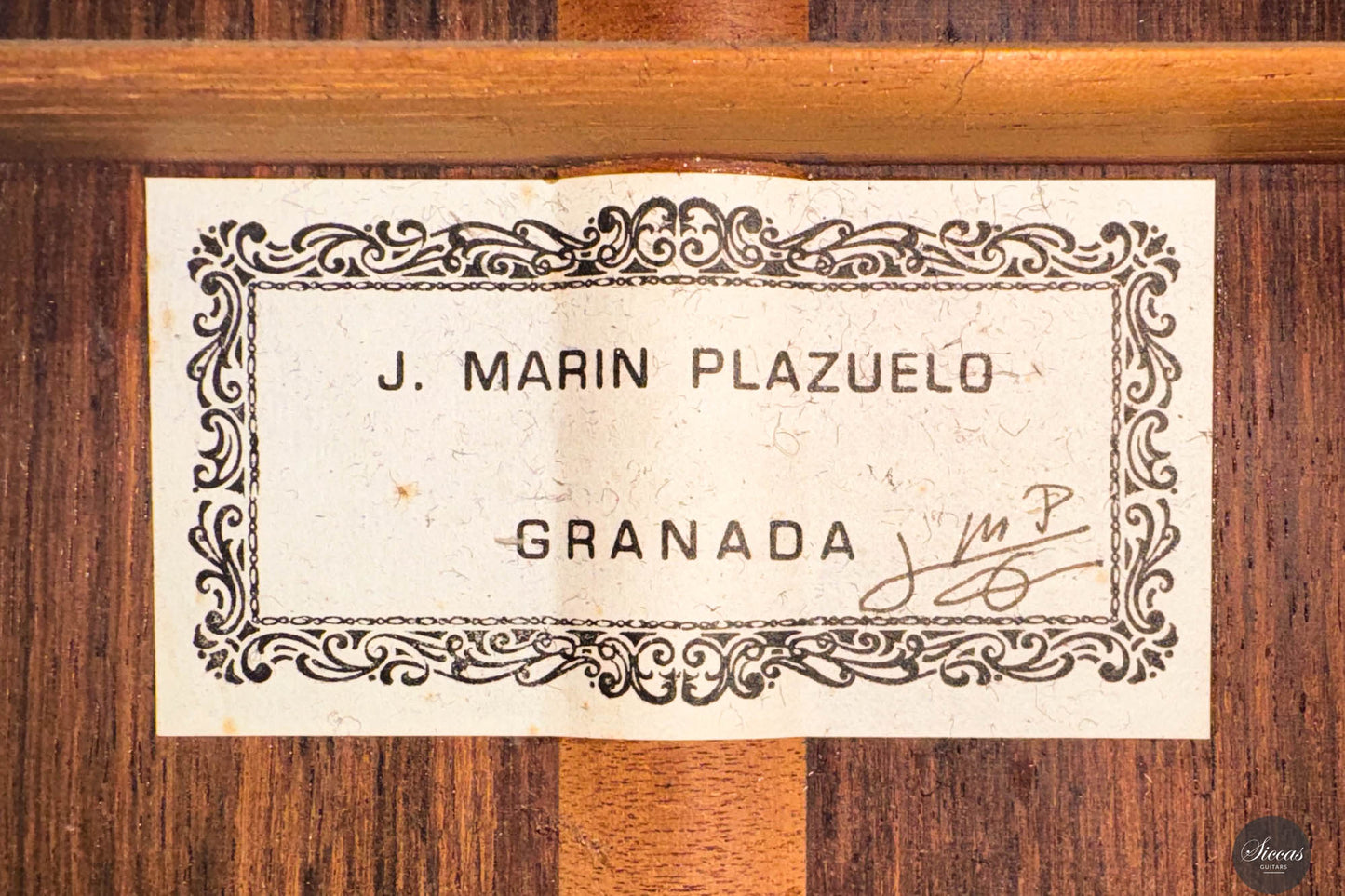Jose Marin Plazuelo - 2010 - Flamenca Negra No. 681
Jose Marin Plazuelo - 2010 - Flamenca Negra No. 681
Details
Details
Overview
Overview
Shipping important note
Shipping important note
Delivery times are typically reliable and most instruments arrive within the estimated timeframe.
Should any unexpected delay occur, our team will keep you informed and provide support at every step. For all shipping details and exceptions, please see our Shipping Policy.
Details about GPSR
Details about GPSR























Video overview


More details about the guitar
About the luthier
Born in Granada in 1960, José Marin Plazuelo is both the nephew and student of Antonio Marin Montero, one of Granada’s most sought-after and well-known luthiers. José Marin began his apprenticeship with his uncle when he was only 14 years old, and shortly thereafter began building guitars under his own name. In doing so, he creates very finely crafted guitars of very high quality. His guitars are played worldwide by professional and dedicated guitarists. To this day he shares his workshop with Antonio Marin Montero and José Gonzalez Lopez and has positioned himself as a worthy successor to the esteemed legacy of Antonio Marin Montero. This instrument is an embodiment of meticulous workmanship and a judicious selection of materials, qualities that are essential in high-end guitar making.About the guitar
This “flamenca negra”, numbered 681, has a finely grained spruce top and Indian rosewood back and sides. Its low body resonance around E/F sets it apart from other flamenco guitars, showcasing round deep basses and not-so-short sustain. Naturally, it has a fast response and an overall bright tone, offering nevertheless many colour possibilities. This instrument is in very good condition with several but shallow playing wear and no structural issues, an indication of both well-executed craftsmanship and diligent maintenance. This ensures that the instrument not only retains its aesthetic appeal but also its sound quality and playability over time.Regular care extends the life of the instrument
Even with careful use, a classical guitar may gradually change in appearance or respond to unstable storage conditions. Have a close look at your guitar regularly and be attentif to changes. If your instrument is suffering from its environement, it will let you know.
Protect Your Guitar: Handle with Care
Be mindful when touching your instrument with greasy or unwashed hands: any skin contact is a small attack on the varnish. Of course, a guitar is made to be played, but taking a few precautions helps preserve its beauty: wash your hands before playing, wear long sleeves, and avoid unnecessary direct skin contact with the body of the instrument.
Pro tip: Avoid playing with a button-up shirt, heavy jewelry, or a belt, as these can scratch the guitar. Also, make sure your guitar case is free of any objects that could damage the instrument during storage.
String care
A good habit to adopt is wiping down your strings briefly after each playing session. This small action significantly extends their lifespan and helps maintain a consistent, comfortable feel under your fingers.
Most importantly, clean strings are essential for keeping your instrument in tune. Corrosion, sweat, and dust can affect the uniformity of the strings and interfere with accurate tuning across the entire fingerboard.
Pro tip: If you're having trouble getting your guitar in tune, it might be time to change the strings. A useful test is to compare the pitch of the 12th fret harmonic with the fretted note at the 12th fret; if there's an unusually large gap between them, your strings may have lost their integrity and should be replaced.
Keep Your Shellac Finish Shining!
Got a guitar with a shellac (French polish) finish? Here's a simple trick: Take a clean microfiber cloth and gently breathe on the surface to create a light mist. Then, softly rub to remove fingerprints, sweat, and grease. That’s usually all it takes to keep it looking great, no products needed!
Pro tip: Every few years, treat your guitar to a check-up with a luthier to keep it in top shape.
Storing Your Guitar: Climate Matters
Your guitar can safely stay outside its case, as long as the surrounding environment maintains 42–55% humidity and a temperature between 18–25°C.
Keep in mind that humidity levels can still fluctuate inside the case, especially during seasonal changes.
- Too much humidity may cause overtightened strings and a dull tone.
- Too little humidity can lead to a bulging top, string buzz, or even cracks.
Avoid placing your guitar near radiators, air conditioners, or windows with direct sunlight.
Pro tip: Always close your guitar case while playing. This helps preserve a stable microclimate inside the case, so your instrument is protected the moment you put it back in.

















































